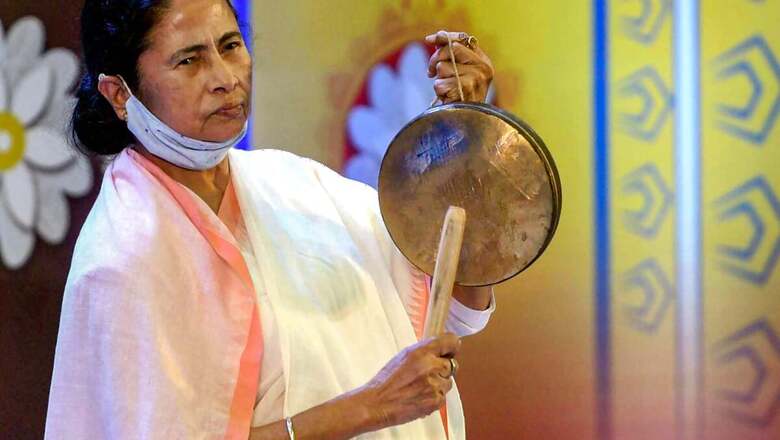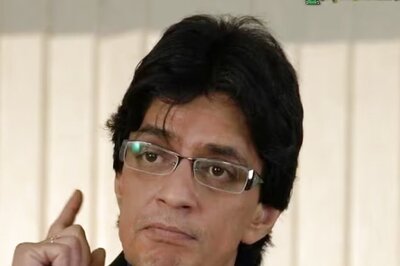
views
Chanting the chandipath, announcing assistance for Brahmin priests and Durga Puja committees, and mapping a new temple pilgrimage route for devotees: over the past several months, West Bengal chief minister Mamata Banerjee has taken a slew of steps to woo the Hindu voters and dent the Bharatiya Janata Party’s support base in the state. Analysts say the Trinamool Congress chief is aware that she needs to break the nearly 30 per cent mainly Hindu vote share which has gravitated towards the BJP in recent years primarily from the Left Front and the Congress to win the ongoing assembly elections.
Among the most significant decisions taken by Mamata was the announcement of a monthly allowance of Rs 1,000 and free housing for nearly 8,000 Sanatan Brahmin priests in the state.
“For several years, Sanatan Brahmin priests were deprived of any help. There are some who are extremely poor. Some of them met me and requested for a package and land to make this a ‘Sanatan pilgrimage’ destination,” the chief minister said on September 14 last year. “Today, in the cabinet meeting we have decided to pay them a monthly allowance of Rs 1,000 and also provide housing for them under Bangla Awas Yojana. I don’t have the exact numbers of Sanatan Brahmin priests but so far we have received names of 8,000 and all of them will get their monthly allowance of Rs 1,000 from this year’s Durga Puja and they will be eligible for housing.”
There were allegations from rivals that she was trying to win over Brahmin priests for political reasons. But the CM said, “Please don’t speculate much about this move. If a priest of a church will ask for any help, our government is always there to stand beside them.”
She also announced the proposed mapping of century-old temples in the state to encourage pilgrimage.
“There are many tribal temples and religious sites. For example, there are temples of Devi Chaudhurani (in Jalpaiguri district), which require more attention. I have asked the state information and cultural department to start working on this unique project to map such places for their development. We want to create ‘Maha Tirtha Bhumi’ and ‘Maha Punnya Bhumi’,” she said.
Another attempt by Mamata to woo Hindu voters was observed by political experts when she announced a grant of Rs 50,000 each for nearly 30,000 Durga Puja committees across the state last year after their donation collection was hit by the Covid-19 crisis. The move cost the public exchequer around Rs 140 crore. She also halved the electricity bills for the puja committees.
In the 2016 assembly elections, the BJP’s vote share was 10.2 per cent and in the 2019 Lok Sabha polls it went up to 40.3 per cent. In the past three years, the BJP has managed to cultivate religion-driven politics in Bengal and it has been evident with its significant rise in the state in terms of its vote share, analysts say. A close look shows that from the 2011 assembly polls to the ones in 2016, the Left Front saw its vote share drop by 9.88 per cent, and from the 2014 Lok Sabha polls to the 2019 edition, its vote share further plummeted to nearly 16 per cent.
However, the Congress vote share from the 2011 to 2016 assembly elections went up from 8.91 per cent to 12.3 per cent but it fell dramatically in the 2014 Lok Sabha polls to 9.6 per cent while in the 2019 general elections the party managed to secure only 5 per cent votes. These votes, most of which were once with the Left Front and Congress, went to the BJP as there was no decline in the TMC’s vote share. In the 2011 assembly elections, the Trinamool’s vote share was 39 per cent, which increased to 39.56 per cent in 2016. Similarly, in the 2014 Lok Sabha polls the TMC’s vote share was 39.03 per cent, which the party managed to increase to 43.3 per cent in 2019.
Also, in Bengal, with a more than 31 per cent Muslim vote share, the community was a key factor behind the Left Rule lasting 34 years in the state. In 2011, Mamata came to power with the support of Muslim voters, and this time they are once again going to be a crucial factor for any political party to form the next government. The BJP knows it well that any significant division in the Muslim vote share, a key element in nearly 90 assembly segments out of the 294 in the state, could jeopardise Mamata Banerjee’s hopes of retaining power. For instance, popular cleric Abbas Siddiqui’s Indian Secular Front, which has joined the Left-Congress alliance, could spoil The TMC’s game and improve the BJP’s chances by eating into the Muslim vote share.
The polls to the 294-member state assembly are being held in eight phases from March 27. The final round of voting will take place on April 29. The counting of votes will take place on May 2.
On March 9, Mamata intensified her attacks on the BJP’s religion-driven politics, accusing the party of trying to polarise Hindu voters.
She accused Suvendu Adhikari, once her close aide who is now contesting against her from the Nandigram seat for the BJP, of playing the Hindu-Muslim card. “I would like to tell him that I belong to a Brahmin family and he should not play the religion card with me. Don’t teach Hindu dharma to me,” she said.
The chief minister has also been regularly concluding her public speeches with Sanskrit shlokas and chandipath. However, observers say this could also be a boost for the BJP and its support base because the CM’s actions could reinforce the saffron party’s ideological dominance.
Read all the Latest News, Breaking News and Coronavirus News here


















Comments
0 comment